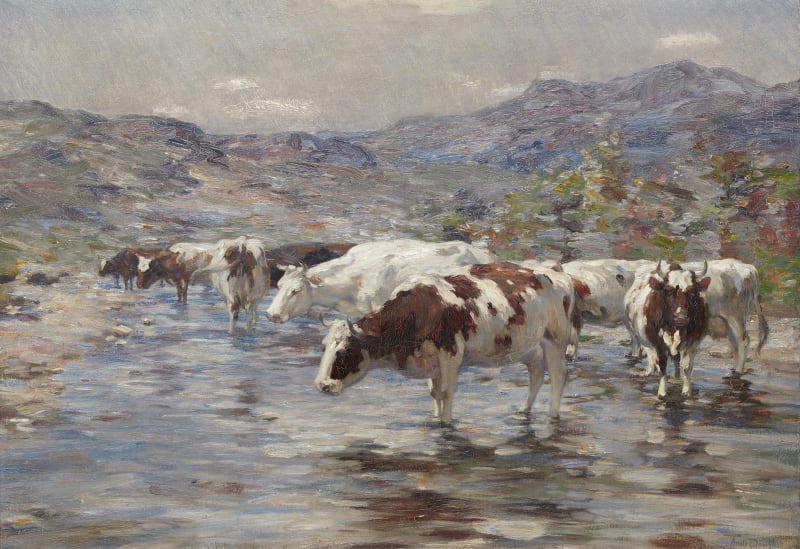Elected ARSA: 17 March 1920
Elected RSA: 2 October 1932
Andrew Douglas, whose sudden death occurred at 5 Picardy Place, Edinburgh, on 21st February, was born at his father’s farm near Carrington, Midlothian, in April 1861. Educated at a private school, it was some time before he began an artist’s career, for we find it was not till 1897 that he won the bronze medal of the Academy’s Life Class and the Keith Prize, for the best work by a student in the annual exhibition.
Previously he had attended the old School of Art at the Mound. For the further development of his art he visited Belgium, Holland and France. An extensive tour in America followed his student days and there he made many friends; many of his most important pictures are to be found in private collections in America.
His typical work was cattle in a Highland setting. Thus it is easy to understand his love of Killin as a painting ground, with its moors and hills, the turbulent river Dochart and the placid Lochy, with wading shaggy cattle. For the same reason the Trossachs, especially the Brig o’ Turk, strongly appealed to him.
Near Edinburgh his favourite haunt was East Linton, where he was closely associated with the group which forgathered to paint at the meadow and the old mill. He is represented at Munich by a work purchased by the late Prince Luitpold of Bavaria, and in the Walker Art Gallery, Liverpool, by ‘‘ Lowland Cattle,” bought by the Corporation.
In addition to the usual Scottish and English exhibitions—in the Royal Academy he had three large works on the line in 1919—he exhibited in Munich, Berlin, Vienna and the United States. Elected an Associate of the Royal Scottish Academy in 1920 he was raised to full membership in 1932. : “ Hail fellow, well met”? with anyone who hunted or fished—legally or doubtfully so—or loved the Highlands, Douglas had a peculiarly boyish temperament, and the contrast between his actual age and his jovial and youth- ful presence was mystifying.
Proud of his association with the Academy he undertook all its duties with great seriousness. The day before his death he was present at a Council Meeting, and to all appearance in his usual health.
Transcribed from the 1935 RSA Annual Report

